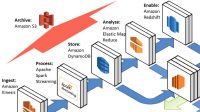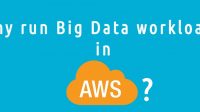fast-paced and data-driven world, the ability to extract meaningful insights from vast amounts of information has become crucial for businesses and organizations across various industries. Big data analytics become important in this situation. By harnessing the power of advanced technologies and analytical techniques, big data analytics enables businesses to uncover hidden patterns, gain valuable insights, and make data-driven decisions. In this article, we will explore the concept of big data analytics, its importance, and the opportunities it presents for businesses.
Understanding Big Data Analytics
What is Big Data Analytics?
Big data analytics refers to the process of examining and interpreting large and complex datasets to uncover patterns, correlations, and other valuable insights. It involves the use of advanced analytical techniques, such as data mining, machine learning, and predictive analytics, to extract meaningful information from structured, semi-structured, and unstructured data.
Components of Big Data Analytics
Big data analytics comprises three key components:
- Data Collection: Gathering and aggregating data from various sources, including internal databases, external datasets, social media, and IoT devices.
- Data Processing: Cleaning, transforming, and organizing the collected data into a format suitable for analysis. This step often involves data integration, data cleansing, and data normalization.
- Data Analysis: Applying statistical, mathematical, and computational techniques to derive insights and make data-driven decisions. This includes data mining, machine learning algorithms, and visualization tools.
Importance of Big Data Analytics
Big data analytics plays a pivotal role in today’s business landscape due to the following reasons:
- Decision Making: By providing actionable insights, big data analytics enables informed decision making, leading to better business outcomes.
- Competitive Advantage: Organizations that effectively leverage big data analytics gain a competitive edge by identifying market trends, customer preferences, and optimizing business operations.
- Improved Efficiency: Big data analytics helps streamline processes, improve resource allocation, and optimize operational efficiency, leading to cost savings and higher productivity.
- Innovation and Product Development: Insights derived from big data analytics can drive innovation and facilitate the development of new products and services based on customer needs and preferences.
In the next sections, we will delve deeper into the key techniques, applications, challenges,and best practices in big data analytics, as well as explore the future trends in this field.
Key Techniques in Big Data Analytics
Data Mining
Data mining involves discovering patterns, correlations, and relationships within large datasets to extract valuable insights. It utilizes techniques such as clustering, classification, regression, and association rules to uncover hidden patterns and make predictions.
Machine Learning
Computers can learn, predict the future, and make judgments without explicit programming thanks to machine learning algorithms. It involves training models on historical data and using them to make accurate predictions or classifications on new data. Machine learning algorithms can identify trends, anomalies, and patterns in vast datasets.
Predictive Analytics
Predictive analytics utilizes historical and real-time data to forecast future outcomes and trends. It employs statistical modeling, machine learning, and data mining techniques to make predictions and optimize decision-making processes. Predictive analytics finds applications in sales forecasting, demand planning, risk assessment, and personalized marketing.
Natural Language Processing
Natural Language Processing (NLP) focuses on understanding and interpreting human language by computers. It enables machines to comprehend, analyze, and generate human language, allowing organizations to extract insights from textual data, sentiment analysis, and language translation.





